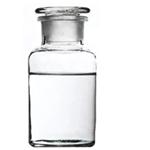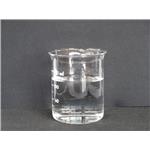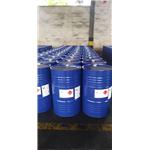- Butyl acrylate
-

- $80.00 / 1kg
-
2024-04-23
- CAS:141-32-2
- Min. Order: 1kg
- Purity: 99%
- Supply Ability: 20Tons
- Butyl acrylate
-

- $15.00 / 180kg
-
2023-12-25
- CAS:141-32-2
- Min. Order: 1kg
- Purity: 99%
- Supply Ability: 20000
- Butyl acrylate
-

- $0.00 / 180kg
-
2023-12-05
- CAS:141-32-2
- Min. Order: 20000kg
- Purity: 99.9%
- Supply Ability: 15000ton
Related articles - Uses of Butyl acrylate
- Butyl acrylate is a chemical intermediate manufactured and processed almost entirely within closed systems to produce homopoly....
- Dec 1,2021
|
| | Butyl acrylate Basic information |
| | Butyl acrylate Chemical Properties |
| Melting point | -69 °C | | Boiling point | 61-63 °C60 mm Hg(lit.) | | density | 0.894 g/mL at 25 °C(lit.) | | vapor density | >1 (vs air) | | vapor pressure | 3.3 mm Hg ( 20 °C) | | refractive index | n20/D 1.410(lit.) | | Fp | 63 °F | | storage temp. | Store below +30°C. | | solubility | 1.7g/l | | form | Liquid | | color | Clear Colorless | | Odor | Fruity | | Odor Threshold | 0.00055ppm | | explosive limit | 1.1-7.8%(V) | | Water Solubility | 1.4 g/L (20 ºC) | | Sensitive | Light Sensitive | | Merck | 14,1539 | | BRN | 1749970 | | Exposure limits | TLV-TWA 10 ppm (~55 mg/m3) (ACGIH). | | Stability: | Stable. Flammable. Incompatible with strong oxidizing agents, strong acids, strong bases. | | InChIKey | CQEYYJKEWSMYFG-UHFFFAOYSA-N | | LogP | 2.38 at 25℃ | | CAS DataBase Reference | 141-32-2(CAS DataBase Reference) | | IARC | 3 (Vol. 39, Sup 7, 71) 1999 | | NIST Chemistry Reference | 2-Propenoic acid, butyl ester(141-32-2) | | EPA Substance Registry System | Butyl acrylate (141-32-2) |
| | Butyl acrylate Usage And Synthesis |
| Description | Sensitization to n-butyl acrylate can occur in those in
the dental profession. | | Chemical Properties | Butyl acrylate is a colorless liquid with a sharp odor. It is readily miscible with most organic solvents. Butyl acrylate contains one of the following three inhibitors to prevent polymerization under recommended storage conditions:
Hydroquinone (HQ) CAS 123-31-95
Monomethyl ether of hydroquinone (MEHQ) CAS 150-76-5
Butylated hydroxytoluene (BHT) CAS 128-37-0 | | Uses | Intermediate in organic synthesis, polymers and
copolymers for solvent coatings, adhesives, paints,
binders, emulsifiers. | | Uses | n-Butyl acrylate is used to make polymersthat are used as resins for textile and leatherfinishes, and in paints. | | Uses | Butyl acrylate is primarily used as a reactive building block to produce coatings and inks,adhesives, sealants, textiles, plastics and elastomers. Butyl acrylate is used in the following applications:
Adhesives – for use in construction and pressure-sensitive adhesives
Chemical intermediates – for a variety of chemical products
Coatings – for textiles and adhesives, and for surface and water-based coatings, and coatings used for paints, leather finishing and paper
Leather – to produce different finishes, particularly nubuck and suede
Plastics – for the manufacture of a variety of plastics
Textiles – in the manufacture of both woven and non-woven textiles | | Production Methods | n-Butyl acrylate can be manufactured via a reaction of
acetylene, n-butyl alcohol, carbon monoxide, nickel carbonyl,
and hydrochloric acid. It is commonly manufactured
via an oxidation of propylene to acrolein and then to acrylic
acid. The acid is reacted with n-butanol to yield the butyl
ester . | | Definition | ChEBI: An acrylate ester obtained by the formal condensation of the hydroxy group of butan-1-ol with the carboxy group of acrylic acid. | | General Description | A clear colorless liquid with a sharp characteristic odor. Very slightly soluble in water and somewhat less dense than water. Hence forms surface slick on water. Flash point 105°F. Density 7.5 lb / gal. Used for making paints, coatings, caulks, sealants, adhesives. | | Air & Water Reactions | Flammable. Very slightly soluble in water. | | Reactivity Profile | Butyl acrylate reacts exothermically with acids to liberate heat along with alcohols and acids. Reacts with strong oxidizing agents, perhaps sufficiently exothermically to ignite the reaction products. Mixing with basic solutions generates heat. Generates flammable hydrogen with alkali metals and hydrides. Attacks many plastics [Handling Chemicals Safely 1980. p. 233]. Polymerizes readily, generating much heat in a reaction that is favored by heat and light [Handling Chemicals Safely 1980. p. 235]. | | Hazard | Moderate fire risk. Questionable carcinogen.
Acrylic esters, including butyl acrylate, have a very strong, unpleasant odor that may be bothersome. However, the smell of acrylates does not necessarily indicate a health risk. Acrylic esters have an extremely low odor “threshold,” meaning that even very small amounts in the air can be detected by smell.
Butyl acrylate liquid and vapors may cause slight eye irritation and even slight corneal damage. They may also cause pain greater than expected given the level of irritation.
Brief contact may cause moderate skin irritation with local redness. Prolonged contact may cause severe skin irritation with local redness and discomfort. Prolonged or widespread skin contact may result in absorption of harmful amounts and may cause an allergic skin reaction.
Excessive exposure to butyl acrylate vapors may cause irritation to upper respiratory tract (nose and throat) and lungs. Vapor concentrations are attainable which could be hazardous on single exposure.
Butyl acrylate has low toxicity if swallowed, but may result in gastrointestinal irritation or ulceration. Swallowing butyl acrylate may result in burns of the mouth and throat.
Butyl acrylate causes birth defects in laboratory animals only at doses toxic to the mother. It is toxic to the fetus in lab animals at doses toxic to the mother. | | Health Hazard | Vapor is irritating when breathed at high concentrations. Contact with liquid causes irritation of skin and burning of eyes. | | Health Hazard | n-Butyl acrylate is moderately irritating toskin. Its vapor is an irritant to mucous mem branes. The liquid caused corneal necrosiswhen instilled into rabbit eyes. The toxic andirritant properties of this compound are sim ilar to those of methyl acrylate. The adversehealth effects, however, are somewhat lessthan those of methyl and ethyl acrylates.The LD50 and LC50 values reported in theliterature show significant variations. Also,these data varied widely between mice andrats. The dermal LD50 value in rabbits is2000 mg/kg. | | Fire Hazard | HIGHLY FLAMMABLE: Will be easily ignited by heat, sparks or flames. Vapors may form explosive mixtures with air. Vapors may travel to source of ignition and flash back. Most vapors are heavier than air. They will spread along ground and collect in low or confined areas (sewers, basements, tanks). Vapor explosion hazard indoors, outdoors or in sewers. May polymerize explosively when heated or involved in a fire. Runoff to sewer may create fire or explosion hazard. Containers may explode when heated. Many liquids are lighter than water. | | Flammability and Explosibility | Flammable | | Potential Exposure | Butyl acrylate is a colorless liquid. Molecular
weight 5 128.17; specific gravity (H2O:1) 5 0.89 @
20�C; boiling point 5 145�148�C; freezing/melting
point 5 264.6�C; vapor pressure 5 4 mmHg @ 20�C;
relative vapor density (air 5 1) 5 4.4; flash point 5 29�C;
vapor pressure 5 7.5 mmHg @ 30.4�C; Autoignition
temperature 5 292�C. Explosive limits in air: LEL: 1.3%;
UEL: 9.9%. Hazard identification (based on NFPA-704
M Rating System): Health 2; flammability 2; reactivity 2
?. Slightly soluble in water; solubility in water = 0.14%. | | First aid | If this chemical gets into the eyes, remove anycontact lenses at once and irrigate immediately for at least30 min, occasionally lifting upper and lower lids. Seek medical attention immediately. If this chemical contacts theskin, remove contaminated clothing and wash immediatelywith soap and water. Seek medical attention immediately. Ifthis chemical has been inhaled, remove from exposure,begin rescue breathing (using universal precautions, including resuscitation mask) if breathing has stopped and CPR ifheart action has stopped. Transfer promptly to a medicalfacility. When this chemical has been swallowed, get medical attention. Give large quantities of water and inducevomiting. Do not make an unconscious person vomit.Medical observation is recommended for 24� 48 h afterbreathing overexposure, as pulmonary edema may bedelayed. As first aid for pulmonary edema, a doctor orauthorized paramedic may consider administering a corticosteroid spray. | | Carcinogenicity | Not listed as a human carcinogen
by ACGIH, California Proposition 65, IARC, NTP,
or OSHA. | | Metabolic pathway | After oral administration to rats, 14C-butyl acrylate is
metabolized primarily to CO2, accounting for
elimination of up to 75% of the radioactivity
administered. Elimination in urine and feces accounts
for approximately 10 and 2% of the dose, respectively.
The major portion of butyl acrylate is hydrolyzed to
acrylic acid, which is further metabolized to
compounds available for oxidation. Two major
metabolites identified in the urine are N-acetyl-S-(2-
carboxyethyl)cysteine and its S-oxide. A smaller
portion of butyl acrylate is conjugated with glutathione,
and these conjugates result in the formation of the
mercapturic acid excreted in the urine. | | storage | Butyl acrylate is stable under recommended storage conditions. Elevated temperatures can cause hazardous polymerization. Polymerization can be initiated by the absence of air, the presence of free radical initiators and peroxides, or high temperature. The presence of moisture can also accelerate polymerization rate.
Butyl acrylate contains inhibitors to minimize polymerization under recommended storage conditions. Maintain inhibitor and dissolved oxygen level. Uninhibited monomer vapors can polymerize and plug relief devices.
Avoid unintended contact with activated carbon or silica gel, which may cause polymerization. Avoid contact with clay-based absorbants, and with incompatible materials, such as:
Oxidizing materials.
Aldehydes, amines, azides, ethers, free radical initiators, halides, mercaptans, mineral acids, peroxides, rust, strong inorganic bases.
Metals such as brass or copper. | | Shipping | UN2348 Butyl acrylate, stabilized, Hazard Class:
3; Labels: 3—Flammable liquid. | | Purification Methods | Wash it repeatedly with aqueous NaOH to remove inhibitors such as hydroquinone, then with distilled water. Dry with CaCl2. Fractionally distil under reduced pressure in an all-glass apparatus. The middle fraction is sealed under N2 and stored at 0o in the dark until required [Mallik & Das J Am Chem Soc 82 4269 1960]. [Beilstein 2 IV 1463.] | | Toxicity evaluation | Butyl acrylate is a liquid (5 hPa at w20 °C) under normal
environmental conditions. At equilibrium in the environment,
butyl acrylate will partition primarily to air (95%) with
the balance to water (5%). In air, butyl acrylate will be
removed by reaction with photochemically produced
hydroxyl radicals (28 h half-life) and ozone (6.5 days halflife).
In water, butyl acrylate is relatively stable to hydrolysis
at acidic and neutral pHs (half-life≥1100 days) but
will slowly volatilize to air (Henry’s law constant of
21.9 Pa m-3 mol-1 at 25°C) or be biodegraded (58–90%
removal in 28 days). Based on its relatively low octanol–water
partition coefficient (log Kow of 2.38) and rapid metabolism
in biological systems, butyl acrylate does not pose a significant
bioaccumulation hazard. | | Incompatibilities | May form explosive mixture with air.
Heat, sparks, open flame, light, reducing agents; or peroxides may cause explosive polymerization. Incompatible
with strong acids; amines, halogens, hydrogen compounds,
oxidizers, sunlight, or other catalysts. | | Waste Disposal | Dissolve or mix the material
with a combustible solvent and burn in a chemical incinerator equipped with an afterburner and scrubber. All federal,
state, and local environmental regulations must be
observed. |
| | Butyl acrylate Preparation Products And Raw materials |
|